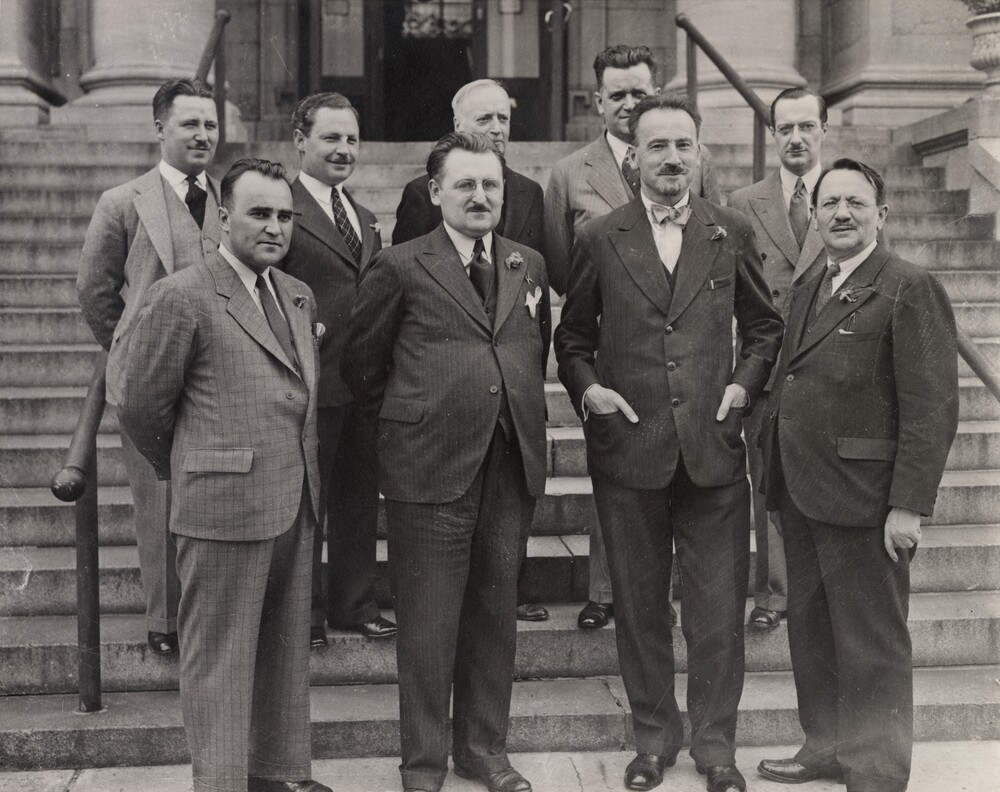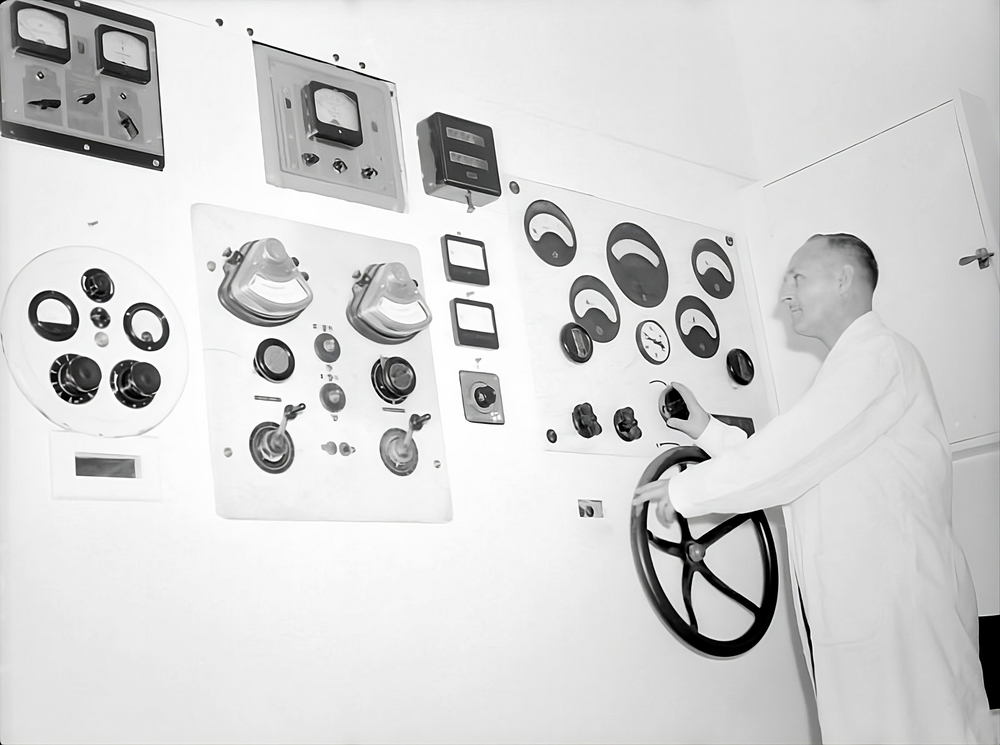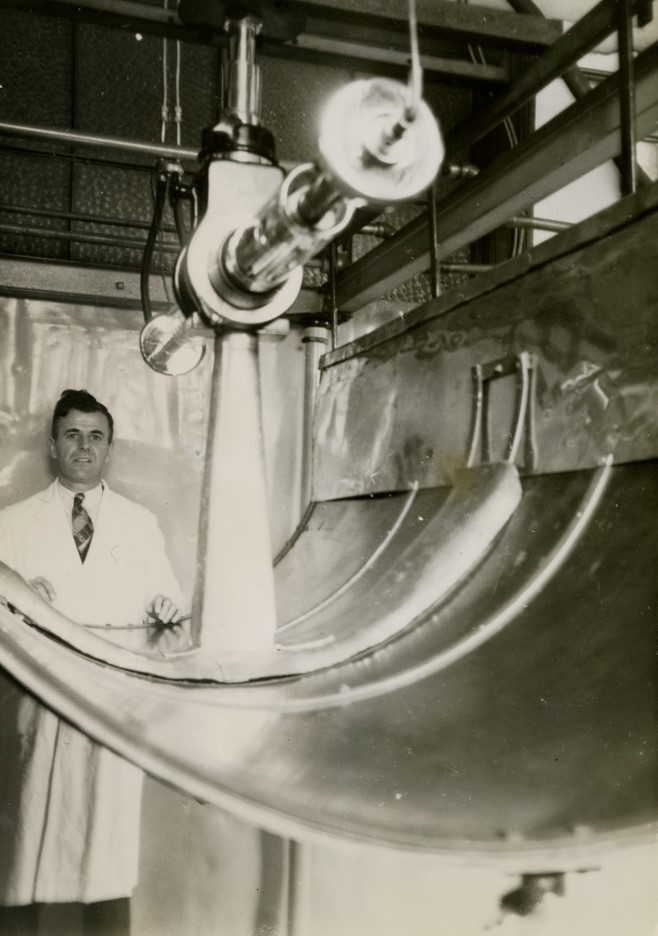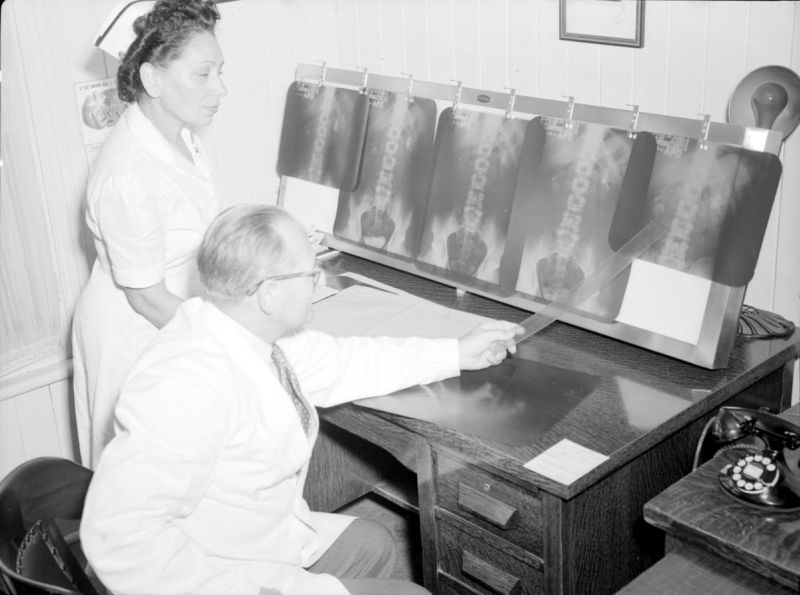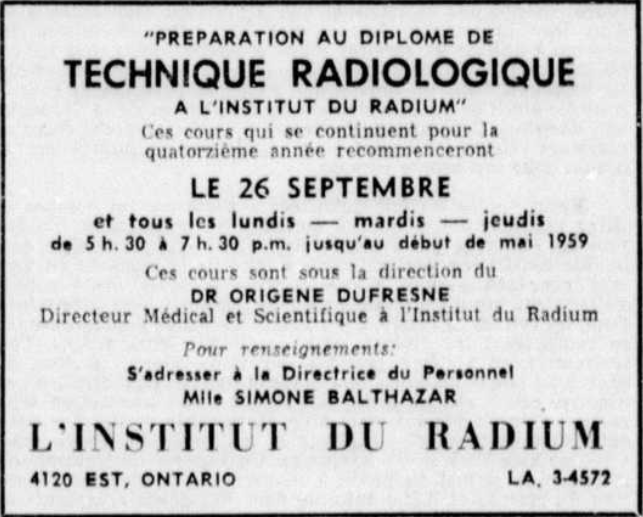Doctors and Treatments
Many doctors still gravitated around the Radium Institute; some working full time, others as consultants amid a number of interns. Whereas the full-time medical staff ensured the smooth running and maintaining of the Institute’s services, consultants were medical specialists who came in on fixed days, or were on call to examine and treat patients within their field of expertise.
Medical practices in the treatment of cancer evolved during the Institute’s forty-year existence. However, doctors there focused mainly on three types of treatments: radium therapy, roentgen therapy and electromagnetic therapy. More specifically, they used the radiation emanating from radium (radon) and X-rays to detect, analyze the progression of, and treat cancers.
Most radon and X-ray treatments consisted in applying radioactive material as close to the affected tissues as possible, either through radiation emission, the application of compresses directly on the skin, or by inserting radon-filled tubes in the patient’s body. These often very invasive methods required the use of high-voltage machinery, or the direct application of radon, which resulted in sometimes painful burns.
For the first few years of the Institute, several doctors would conduct medical research on cancer in addition to treating patients. Over time, the number of patients became so important that they had to prioritize the latter. Despite this reorientation, Doctor Gendreau still published 19 scientific papers on radiotherapy between 1928 and 1940.
As of 1945, doctors at the institute would give classes to train new radiology technicians. For two or three nights a week, cohorts of between 20 and 30 students attended classes given by the Institute’s doctors, one of whom was Doctor Origène Dufresne. Among the students were nurses and nuns.


